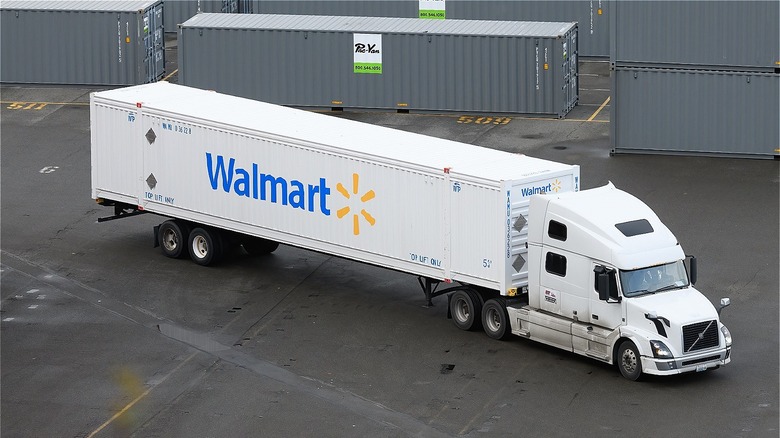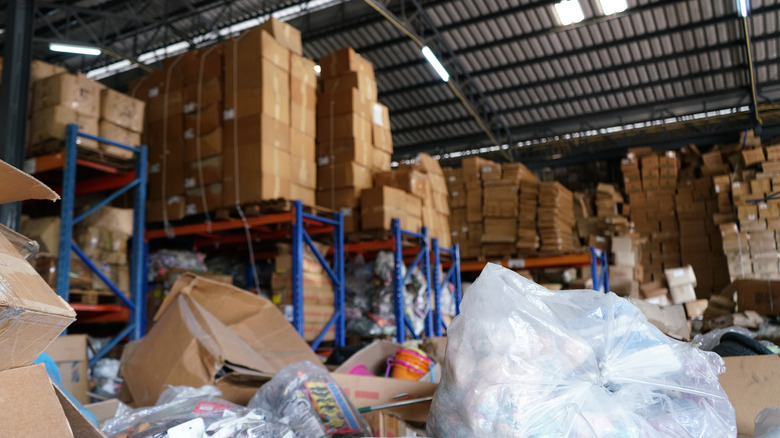How Supply Chain Issues Have Caused Walmart Surpluses
If you've gone to a Walmart in the last couple of months, you might have noticed that the store is packed. And we're not talking packed like you see on Black Friday — we're talking packed with pallets upon pallets of overstock items.
Don't get us wrong, Walmart isn't the only store dealing with overstock issues right now. Earlier this summer, Target held a huge clearance sale to clear out some of its inventory. According to Axios, some items were marked down by as much as 70%, which is pretty crazy when you're talking about patio furniture and TVs.
However, unlike Target, Walmart is still struggling to reduce its inventory in a way that doesn't decimate profits. When workers reveal what it's really like to work at Walmart, particularly during this period of overstock, they don't exactly paint a pretty picture. But working conditions aren't the only challenge the company is facing at this moment.
Why does Walmart have so much overstock right now?
In general, Walmart's current overstock problem can be tied back to the inflation crisis. As NBC News explains, products like exercise equipment, office supplies, and clothes were in high demand during the lockdown phase of the pandemic, prompting companies to kick production into overdrive.
Unfortunately, supply chains got further confused when the inflation crisis hit. Especially earlier this year, when inflation was really affecting spending habits, shoppers were buying only the necessities, leaving the pandemic's favorites to pile up in stores. To make matters worse, some inventory systems — such as the one at Walmart — automatically order supplies, even if they aren't needed (via Business Insider).
For employees, this means overcrowded stockrooms, pallets blocking breast-feeding rooms and restrooms, and even safety hazards. Needless to say, many employees are fed up with the situation, and some are even considering quitting. Per Tell Me Best, bulk shipments are expected to continue through the spring of 2023.

